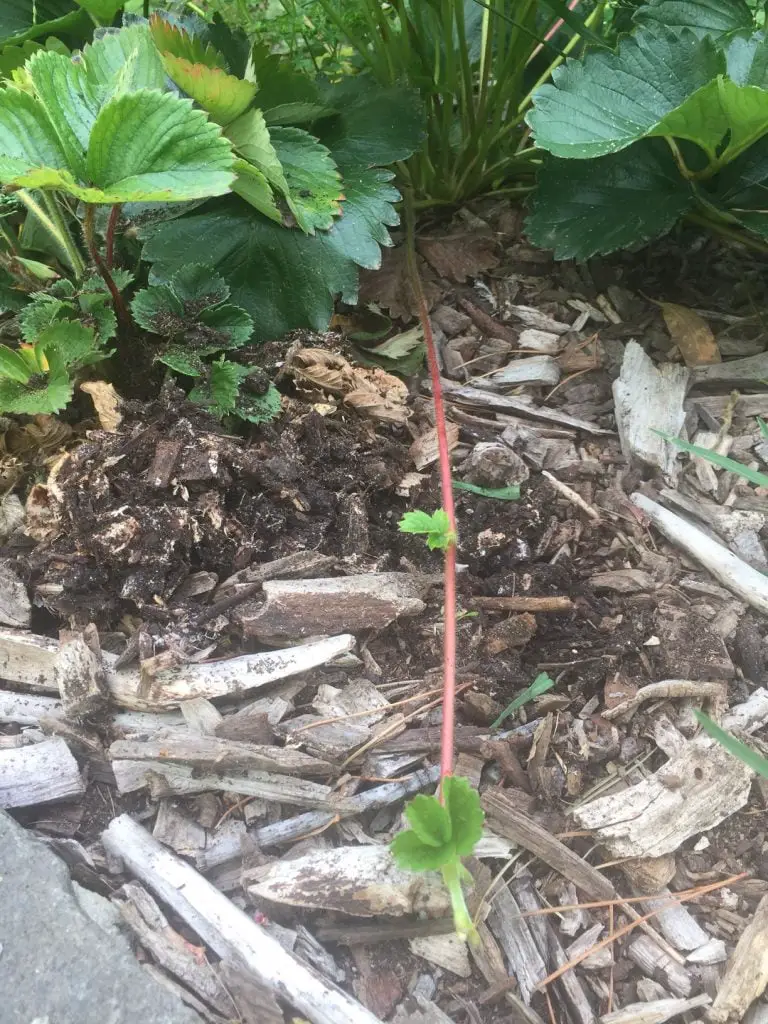How Many Strawberries Can You Get From One Plant? If you are considering growing Strawberries for the first time you won’t be disappointed. It is the fruit, more than any other, that highlights what we have lost by outsourcing our food production to corporations. The flavor of Strawberries that are sold in retail outlets are a pale imitation compared to homegrown Strawberries. So to start your Strawberry patch off it is important to understand how much a plant produces.
A single Strawberry plant will produce between 40 to 70 berries across the season depending upon the variety selected. This equates to a weight of between 1.5 to 3.0 lbs (0.7 to 1.4 kg) of fruit. This means that you need to have between 7 to 10 plants per person to ensure that you produce enough fruit to eat during the fruiting season which normally runs from late Spring to early Autumn.
The quickest and easiest way to start your Strawberry patch is to purchase plants. While it is possible to grow plants from seed it generally takes an extra season or two before you see any fruit. Given, that Strawberries are relatively expensive to purchase from stores it is worth accelerating the process by purchasing plants.
The cheapest way to purchase plants is by buying them as bare-rooted plants in winter as they normally cost around one-third of the price of a potted plant. Visit seeds now by clicking the link below to see a wide range of varieties.
Are There Different Types Of Strawberries?
There are three main strawberry types which are referred to as june-bearing, ever-bearing, and day-neutral strawberries which have different periods and duration of fruiting.
June-bearing plants produce a single large crop that appears around June usually however this is dependent upon the specific climatic conditions of your area and can be slightly earlier or later. (This assumes you live in the northern hemisphere)
Ever-bearing plants are ones that start producing when there are 12 hours of daylight or more and will usually continue to produce fruit until the end of summer.
Day-neutral strawberry plants, as the name suggests, are unaffected by the amount of daylight and usually have three peak periods of fruiting which typically appear in early June, mid-July, and late August.
Careful selection of a range of different strawberry varieties can extend the fruiting season for several months.
How Long Will A Strawberry Plant Produce?
Strawberry plants are relatively short-lived perennial plants that will usually live for around 5 to 6 years. However, they are most productive in the first 3 years so to keep your patch producing it is important to replace the Strawberry plant regularly.
As it is often difficult to remember how old the plants actually are so it is a good idea to divide your Strawberry patch into 3 sections to allow 1, 2, and 3-year-old plants to be separated. This will enable you to discard the plants that are three years old and replace them with new ones in a systematic fashion.
At this stage, it is important to highlight that it is often difficult for some gardeners to throw away plants after the third year when they have just produced a good crop. However, you will find that failing to do this will, in the end, cost you more money.
The reason for this is that aside from the reduction in fruit production you will also find that these plants provide reduced opportunities to propagate plants. This over the long term will mean that you will eventually need to buy new plants to replace the existing ones. So be ruthless to the older plants.
How To Propagate Plants
To be able to regularly rotate your plants within your patch you need to either buy additional plants or propagate them. Propagating new Strawberry plants is extremely easy because every year the plant will produce runners that can be used to create a new plant.
A runner is a long thin shoot that has leaf nodes every 4 to 6 inches (10 to 15 cm) which are normally produced in Summer. When the nodes come into contact with the soil they will begin to root. This process happens naturally however you can help things along by pinning the runner down with a weigh or peg. This will ensure that the node remains in contact with the soil allowing the successful formation of roots. A photograph of a runner from one of my Strawberry plants is shown below.

You will note that the runner in the photograph above contains more than one node. Each node on the runner can potentially be used to produce a new plant if it comes into contact with the soil for a period of time.
The development of the new roots on the node will take several weeks. While this process is occurring the runner must remain attached to the plant. In practice, this means that at the end of the growing season the runners can be cut and the new plants can be dug up and repositioned.
This is the ideal point at which three-year-old plants should be removed from your garden and replaced with new plants.
How Many Runners Does A Strawberry Plant Produce In A Season?
As mentioned earlier in the article the plants older than 3 years tend to be significantly less vigorous with respect to the fruit and the production of runners compared to younger plants. And my own experience has been that in some cases you will get no runners at all from aged Strawberry plants. However, it is a different story for younger plants.
Strawberry plants typically produce between 2 and 10 runners per plant in a season, however, around 5 to 7 per plant is most common according to a study by Purdue University. The study commented that pruning runners is necessary to ensure plants direct energies to crown development to improve the volume of fruit for the following year. As such you should aim to have a maximum of 2 to 3 new plants developing from the runners on each existing plant you have.
However, if you are wanting to increase stock dramatically you can opt to sacrifice the performance of existing crowns and focus on producing new plants. In the table below the average number of runners produced per variety is provided for your reference.
| Variety | No. of Runners Per Plant |
| Festival | 10.6 |
| Chandler | 9.4 |
| Sweet Ann | 8.5 |
| Radiance | 7.7 |
| Sweet Charlie | 7.1 |
| San Andreas | 6.0 |
| Camino Real | 5.7 |
| Camarosa | 5.3 |
| Albion | 5.2 |
| Benicia | 2.7 |
What Variety Of Strawberries Produces The Highest Yield?
There are literally hundreds of varieties of Strawberries to choose from so it is impossible to evaluate all of them however of the ones tested in the Purdue University trials we would recommend are either Radiance or Chandler. The main reason for this is that both varieties yield well with Radiance having the longest fruiting period of any of the varieties tested.
Additionally, both varieties were shown to be relatively disease resistant and produce a large number of runners making them easy to propagate for the home gardener. The relative yield of all the varieties tested is provided in the table below.
| Variety | Yield (lbs) | Yield (Kg) | Number of Fruit |
| Radiance | 3.25 | 1.47 | 63.0 |
| San Andreas | 2.73 | 1.24 | 65.2 |
| Chandler | 2.46 | 1.12 | 68.2 |
| Benicia | 2.41 | 1.09 | 60.3 |
| Camino Real | 2.17 | 0.98 | 58.4 |
| Sweet Ann | 2.06 | 0.93 | 39.7 |
| Festival | 2.01 | 0.91 | 46.5 |
| Albion | 1.99 | 0.90 | 37.7 |
| Sweet Charlie | 1.88 | 0.85 | 55.7 |
| Camarosa | 1.73 | 0.79 | 58.1 |
Relevant Articles
How To Make Strawberry Plants Produce More Fruit? (5 Academically Proven Strategies)
How Many Runners Will A Strawberry Plant Have?
Can You Plant Seeds From Store Bought Strawberries?
What Are The Easiest Berries To Grow?

